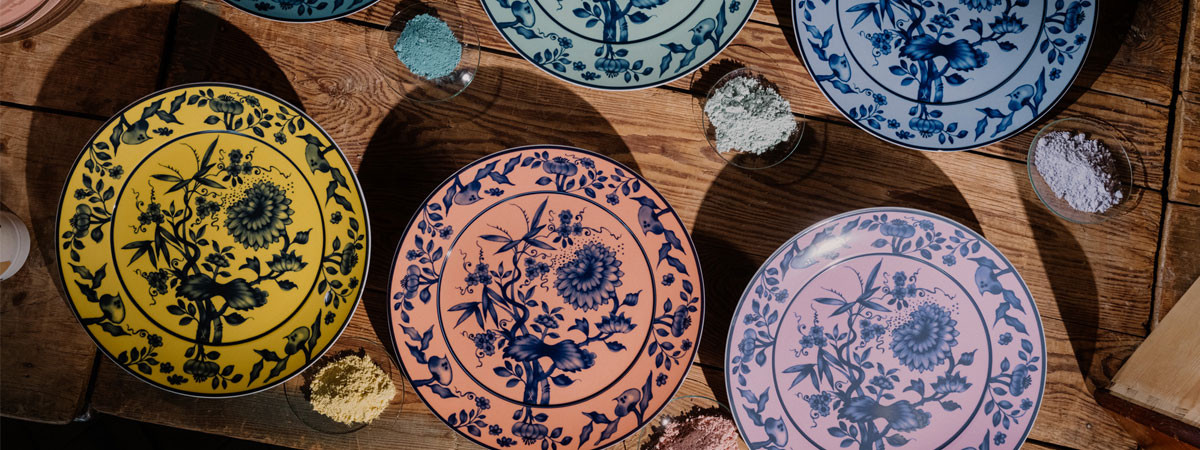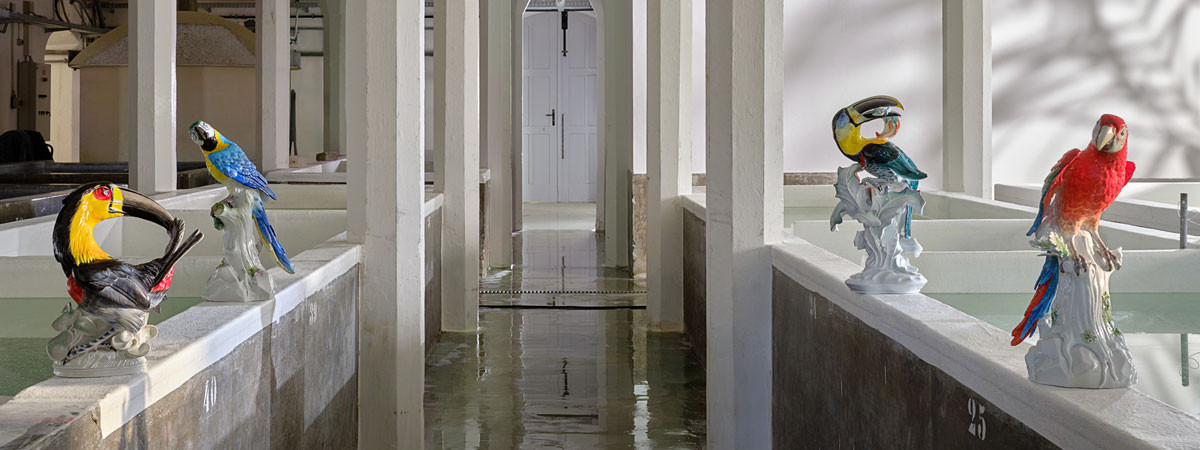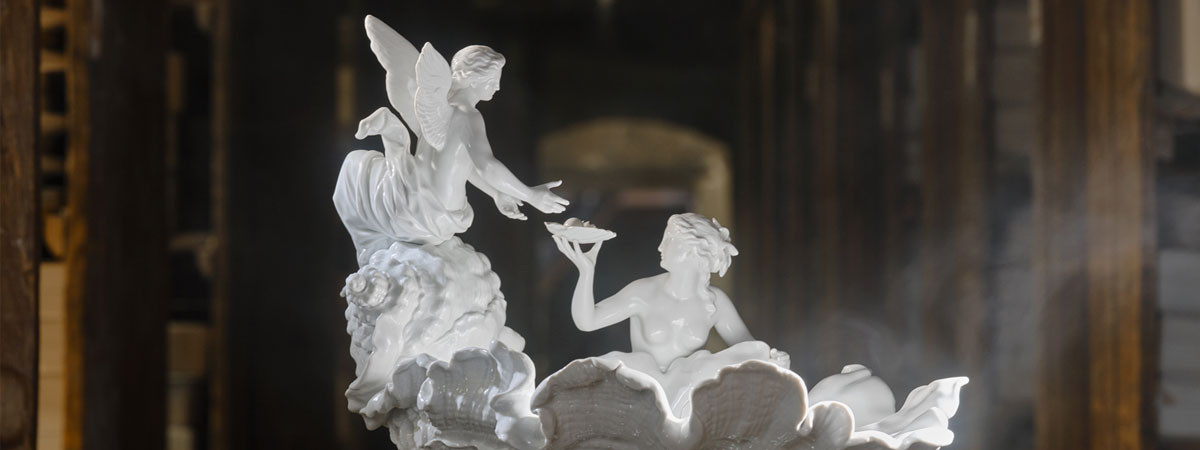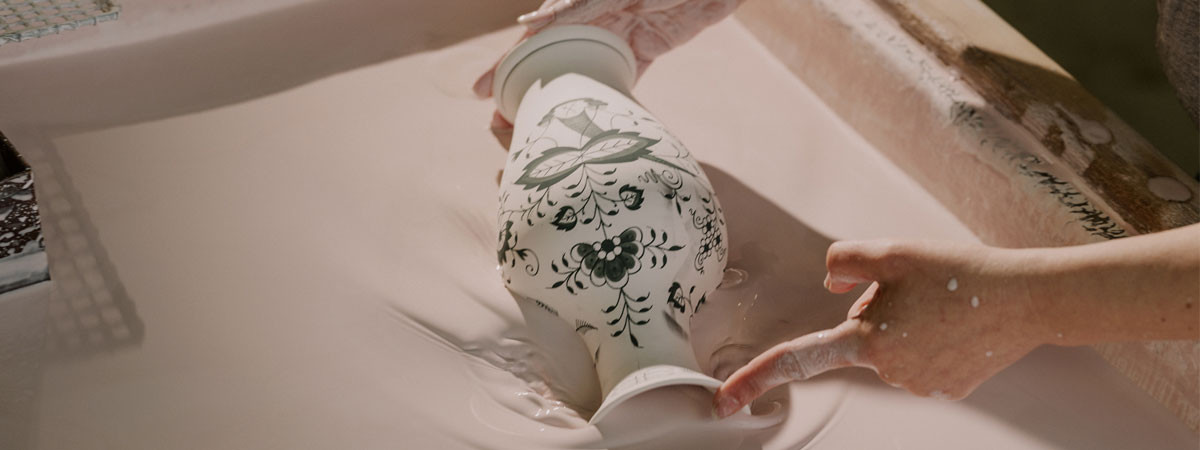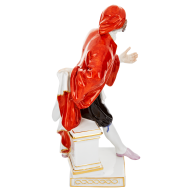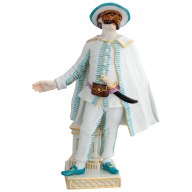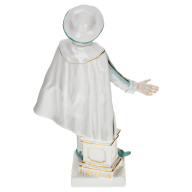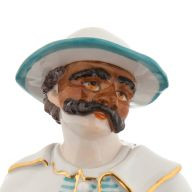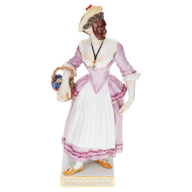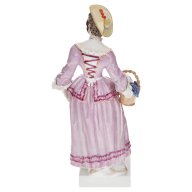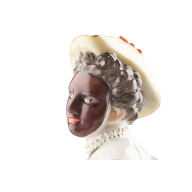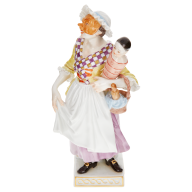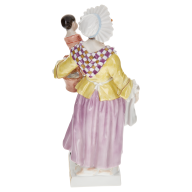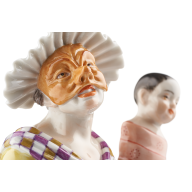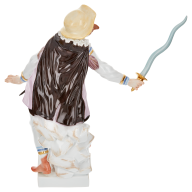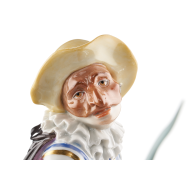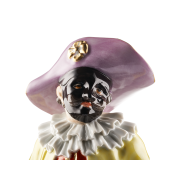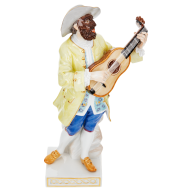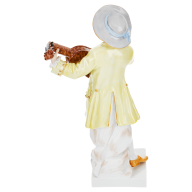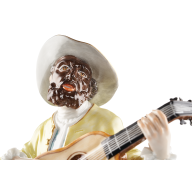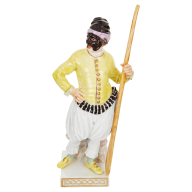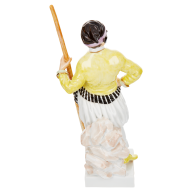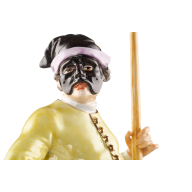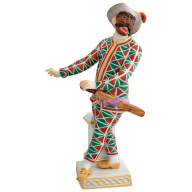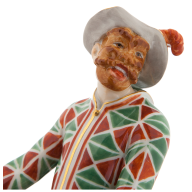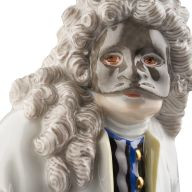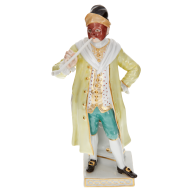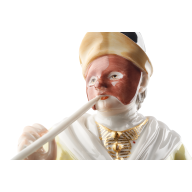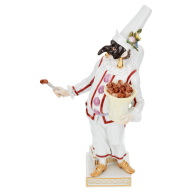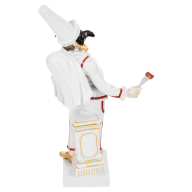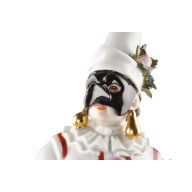Commedia dell arte
Meissen porcelain figurines offer a fascinating look at the combination of art, culture and humor. The figurative representations from the 18th century in particular, known for their masterful workmanship and attention to detail, capture vivid scenes from everyday life or plays. In this context, porcelain figurines depicting Italian comedy and the figures of the Commedia dell'arte are particularly noteworthy. The humorous, often exaggerated characters of this theatrical tradition found a perfect representation in the fine works of art made of Meissen porcelain.
Typical characters such as the cunning Arlecchino, who always has a trick up his sleeve, or the pompous Pantalone, who is constantly deceived by the people around him, find a place in the porcelain figurines. These figures are not only an expression of the artistic skills of the MEISSEN porcelain manufactory, but also a reflection of the social and cultural trends of the time. The detailed depiction of the costumes and the expressive poses of the characters made them a sought-after collector's item for the wealthy elite, who wanted to adorn themselves with these humorous depictions of Italian comedy.
The humor captured in these Meissen porcelain figurines is not only a reflection of the popular theater of the time, but also a symbol of the fascination that Italian culture and theater exerted on the German nobility. The MEISSEN porcelain manufactory, which was considered the first of its kind in Europe at the time, was a master at immortalizing these lively scenes from Italian comedy in the finest porcelain. Italian comedy, with its deep understanding of human weaknesses and its ability to draw humor from everyday situations, found a perfect form of expression in Meissen's masterfully crafted figurines.
Today, these high-quality porcelain figurines are not only important works of art, but also contemporary witnesses to an era in which humor and society were intertwined and in which the art of porcelain became a form of cultural expression. They bear witness to a time when Italian comedy was alive not only on the stages of the theater, but also in the fine salons of the European aristocracy.

